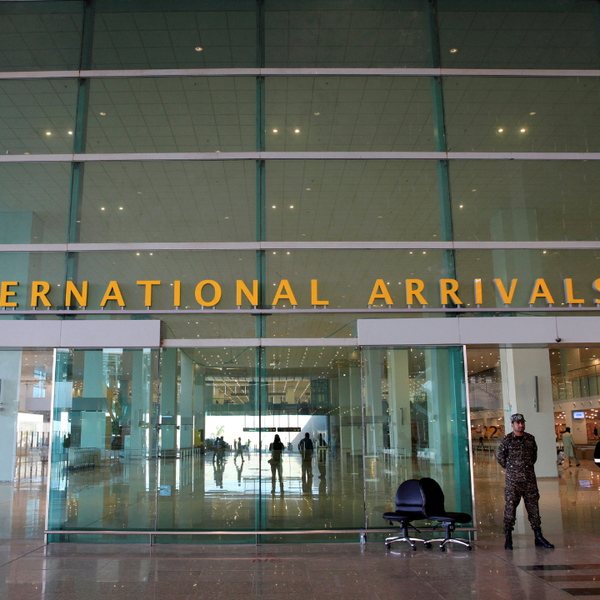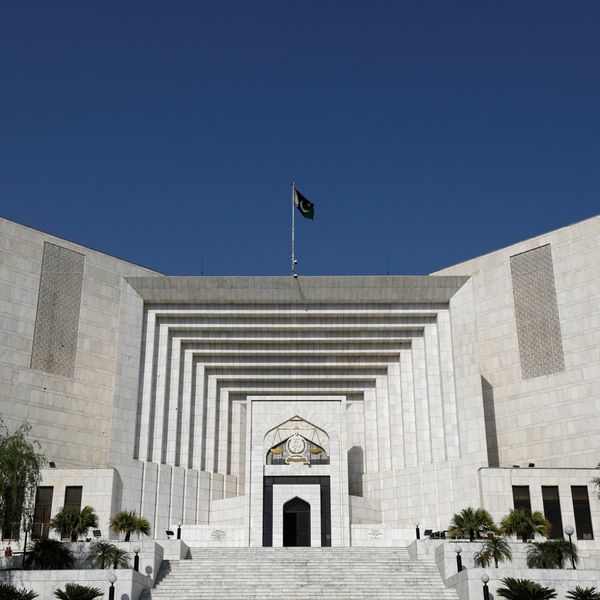Are the Pakistani rupee’s volatile days truly behind it?
Nukta explores why the PKR has been stable for months and analyzes its future trajectory
Nida Gulzar
Research Analyst
A distinguished economist with an M. Phil. in Applied Economics, Nida Gulzar has a strong research record. Nida has worked with the Pakistan Business Council (PBC), Pakistan Banks' Association (PBA), and KTrade, providing useful insights across economic sectors. Nida continues to impact economic debate and policy at the Economist Intelligence Unit (EIU) and Nukta. As a Women in Economics (WiE) Initiative mentor, she promotes inclusivity. Nida's eight 'Market Access Series papers help discover favourable market scenarios and export destinations.
Shahbaz Ashraf
Business Consultant
Seasoned Investment Professional | CFA | 17+ Years of Experience in Equity Research, Valuation & Advisory Seasoned investment professional with over 17 years of experience in equity research, financial analysis, valuations, and investment advisory—primarily focused on financial services firms, including equity brokerages, asset management companies, and family offices. Skilled in financial modeling, portfolio management, and evaluating multi-asset investment opportunities. Known for delivering data-driven insights and actionable strategies tailored to both institutional and private clients. Holds a BBA and MBA in Finance from the Institute of Business Management (IoBM), Karachi, and is a Chartered Financial Analyst (CFA).

The PKR has been stable for months
Shutterstock
Who can forget the headlines that would flash in red on TV screens every other day last year, announcing the Pakistani rupee (PKR) had fallen to a fresh low? People would watch aghast as their savings eroded in real time as the local currency plummeted.
But the rupee (and Pakistan’s economy) have recovered much from last year and the PKR has been stable for months.
Nukta explains why this is and what the outlook is for what was last year termed as “Asia’s worst-performing currency”.
The rupee fell to a record low of 307.1 against the USD in the interbank market last September. However, it started recovering soon after as authorities launched a widespread crackdown against illegal forex trading and smuggling, and the central bank introduced reforms for exchange companies. These measures combined resulted in the near-abolishment of the illegal “black market” and rupee stability.
PKR in recent months
The rupee has appreciated by 0.2% against the USD in the current fiscal year to date, whereas it appreciated by 3.0% in FY24. This was in response to expectations regarding the approval of the IMF Extended Fund Facility (EFF) program, which would open doors for further bilateral and multilateral funding. From its peak in September, the rupee has appreciated by 9.1%, remaining stable just below 280 over the last nine months.
Overall, Pakistan’s economy has strengthened from last year when it came close to the risk of default. This has been marked by its greater-than-expected decline in inflation, its current account balance recording a surplus of $218 million in the first four months of fiscal year 2024-25 (FY25) compared to a deficit of $1.5 billion last year, and financial inflows supported by the new International Monetary Fund (IMF) program. Moreover, the country’s foreign exchange reserves have also risen to double digits.
Since March this year, these positive developments have helped keep the PKR relatively stable, with the currency maintaining a steady rate against the US dollar. The IMF deal has enhanced Pakistan’s financial position, providing a boost to investor confidence and access to global markets from FY26 and onwards once the country’s credit ratings are upgraded further by rating agencies.
Finance Minister Muhammad Aurangzeb has stated that Pakistan plans to issue Eurobonds in FY26 if its credit rating is upgraded to a “B”.
To maintain the functionality of the foreign exchange market, the IMF had asked Pakistani authorities to limit the average premium between the interbank and open market rates to no more than 1.25% over any five consecutive business days. The spread narrowed significantly after the successful completion of the stand-by arrangement (SBA) in April this year.
However, in its latest staff report for the EFF program, the IMF stated that this structural benchmark is continuous and the central bank has introduced strong reforms to keep the spread narrow. This is another reason for the PKR’s stability.
Does this mean PKR volatility is over?
Improved business confidence
Pakistan’s market appears to be optimistic about it, as seen by the notable boost in investor confidence. A stronger view from businesses on the economic environment is indicated by the Business Confidence Index (BCI), which has increased significantly from 39.2 last September to 54.3 this October.
A recent survey by the State Bank of Pakistan reveals that most businessmen anticipate the average PKR-USD exchange rate will remain stable over the next six months, with a smaller portion expecting a moderate increase that could lead to devaluation.
Slight recovery towards the end of the year hints at an improved economic outlook in the coming year. This is also reflected in the BCI which shows that foreign investors have confidence that the economy will be moving towards the right track in the first half of 2024.
Central bank interventions
In an effort to stabilize the rupee amid rising trade and remittances, the SBP made a significant purchase of $722 million in July, marking a 26% increase month-on-month. This brings the total to $1.3 billion over the first two months of the current fiscal year, purchased from local currency markets. This absorption was partly caused by higher remittance flows, which exceeded $3 billion for the first time in FY25 in October.
Moreover, for the first time, the SBP has also started to release information about the dates on which it will buy back dollars, implying its confidence in the PKR. The buyback of dollars shows the government has no shortage of liquidity in the dollar market and is trying to beef up its reserves and retire its short forward positions.
However, despite the improving reserves and current account position, the rupee’s stability is contingent on foreign inflows.
What led to the volatility's end?
Crackdown on informal trading
Workers’ remittances expanded by 34.7% reaching a total of $11.8 billion during the first four months of the current fiscal year, from $8.8 billion in the same period last year. The main growth drivers were the UAE (55.8%), the UK (38.6%), and Saudi Arabia (37.1%).
This is primarily due to more people embracing official channels in the forex market following the kerb premium stabilization and an influx of workers to countries including the GCC, which has resulted in a total of $2.92 billion and $2.33 billion being received from Saudi Arabia and the UAE in 4MFY25, respectively.
The current trend demonstrates a renewed confidence in the Pakistani rupee’s stability, as the spread between interbank and open market exchange rates narrows as a result of tighter foreign currency regulations.
External account stability as evident from an improvement in the current account balance, and inflows supported by the IMF tranche has helped the exchange rate to appreciate by 2.7% in FY24 and 0.2% in fiscal year to date (FY25TD).
Nukta expects that the rupee will depreciate from 278.34 at end-FY24 to 286.8 — down 3% — by end-FY25. The trend suggests that historically, the currency has depreciated by 6% on an annual basis.
The first review of the IMF EFF program is set for March 2024. Whenever the country is under IMF agreements, the currency tends to remain stable at first, but it tends to depreciate both before, and after the deal.
Gross financing requirement at 9-year low
Pakistan’s need for gross external funding is at a nine-year low, according to IMF data. This, and improved external accounts as a result of increased remittances, are helping to stabilize the PKR and increase reserves.
The IMF’s country report for October states that Pakistan will need $62 billion in gross financing for the fiscal years 2025–2027. Approximately $10 billion (UAE deposits $3 billion, Chinese debt $2 billion, Saudi Arabia debt $2 billion and $3 billion in different time frames) of this sum is expected to be rolled over in FY25 and for the next two years too. However, there is no official announcement on this front.
Pakistan has included $1.2 billion in oil on deferred payments from Saudi Arabia in its finance strategy to close the $2.5 billion shortfall estimated by the IMF this year.
The net repayment amount stood at around $6.7 billion, with the repayment of $3.5-4 billion made to bilateral and multilateral creditors in June.
Rising reserves
With the upcoming disbursement of $1.3 billion from the IMF post-conclusion of the first review of the EFF program, more foreign investments coming in and expected rollovers from Saudi Arabia, UAE and China, Nukta expects Pakistan’s foreign exchange reserves to cross $13.5 billion in FY25, up from the current level of around $11.29bn, covering more than 2.5 months of imports.
The global fund also expects the reserves to reach $12.7 billion. This is expected to rebuild reserves and put less pressure on the rupee.
REER
The PKR’s Real Effective Exchange Rate (REER) is at 100.86 as measured in October.
The REER is an index of the price of a basket of goods in one country relative to the price of the same basket in that country’s major trading partners. If REER is below 100 that means that the PKR is depreciating more than the world, and it needs to appreciate by 10% to come back to 100. In this case, exports become competitive and imports become expensive.
But since PKR’s REER is above 100, it means it is appreciating more compared to other currencies.
Persistent risks
However, investor worries regarding Pakistan’s debt sustainability could lead to periodic fluctuations in the domestic currency, especially if issues arise during the IMF reviews. This will discourage investor confidence in the government’s ability to service its debt. In the medium term, the devaluations are expected to persist as the central bank has limited capacity to combat downward pressure on the rupee.







Comments
See what people are discussing